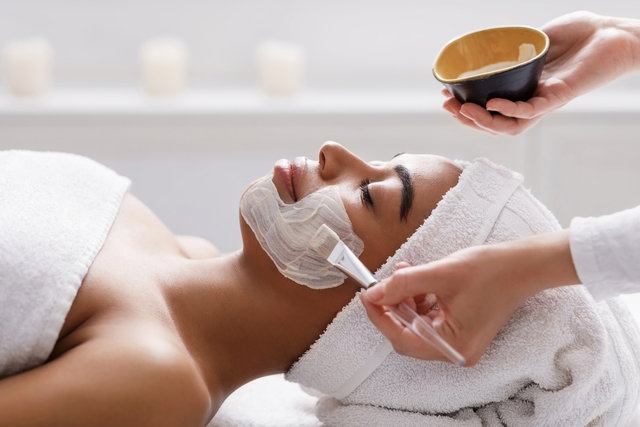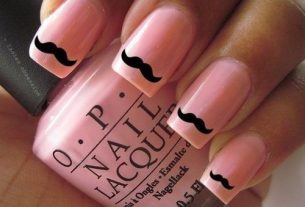White clay, also known as kaolin, is a type of clay used in the aesthetic treatment of wrinkles, dark circles, dry and/or oily skin, blemishes or stretch marks, and can be used in the form of a paste or facial mask.
The use of clay-based products for medicinal and aesthetic purposes is known as clay therapy and can be done with different types of clay, including white clay. Understand better what clay therapy is and how it is done.
If you have any doubts about using white clay on your skin, it is recommended to consult a dermatologist, who is the best doctor to advise on the care you should take with any type of skin.

What is it for
White clay is recommended for:
- Smooth wrinkles;
- Eliminate dark circles;
- Reduce oiliness and hydrate the skin;
- Stretch marks treatment;
- Lighten the skin, removing blemishes;
- Relieve pain in case of arthritis.
White clay has a pH close to that of the skin and is therefore softer compared to other types of clay, and is normally recommended for more sensitive and dehydrated skin. Find out what your skin type is and how to care for it.
Benefits of white clay
The main benefits of white clay are:
1. Stimulates healing
Due to the presence of aluminum in the composition of white clay, this clay has healing properties for the skin.
2. Eliminates bacteria from the skin
Although the exact mechanisms behind the antibacterial action of some types of clay are not known, it is believed that this effect is due to the presence of minerals such as aluminum and iron, which are found in large quantities in clay.
3. Nourishes the skin
White clay contains silicon oxide, which is a substance that works to stimulate the synthesis of collagen and elastin in the skin, helping to keep the skin firm and healthy-looking.
4. Stimulates skin whitening
On the skin, white clay acts as a peeling superficial, helping to remove dead cells and stimulating their renewal, which favors the elimination of blemishes and skin whitening.
5. Absorbs oil
Due to its ability to absorb oils produced by the sebaceous glands in the skin, white clay helps balance oil on the body’s surface without dehydrating the skin.
How to use white clay
White clay is typically used as a facial mask or paste and is prepared by adding water to clay powder.
Depending on its indication, it can also be mixed with specific fruit pulps and extracts to enhance its effects.
White clay can be used as follows, according to its instructions:
- Eliminate dark circles: Apply a paste of white clay with unpeeled cucumber juice to closed eyes and let it act for 30 minutes. Remove the paste with a cotton pad moistened with water. Repeat the application 2 to 3 times a week;
- Smooth wrinkles: Apply a mixture of white clay, tomato extract and honey to wrinkles, leave to act for 60 minutes and then remove with a cotton pad moistened with water. Repeat the application daily;
- Lighten blemishes: Mix the white clay in a small amount of water until a homogeneous paste is formed. Apply the paste to the stain and leave it to act for 90 minutes, daily. To remove the paste, wash your skin under running water.
- Moisturize oily skin: Apply the white clay with egg whites to the skin, leave it to act for 1 hour and then remove the clay with running water. Repeat the application daily;
- Moisturize non-oily skin: apply a paste of white clay, avocado pulp and honey to the skin and leave it on for 60 minutes every day. To remove the paste, wash your skin with running water;
- Remove stretch marks: Apply a paste of white clay with ripe papaya to the stretch marks. Make 2 applications per day, leaving it to act for 90 minutes. Remove the paste by washing the skin under running water and massaging with almond oil. Repeat the application daily.
Furthermore, white clay can also be used in the form of compresses to relieve pain in cases of arthritis, for example, and to prepare clay baths for a calming effect.
Care when using white clay
Children, pregnant women and the elderly should only use white clay under the guidance of a dermatologist, as they have more delicate skin. Especially in case of diabetes, care must be taken due to the risk of skin damage when using clay.
Furthermore, it is not recommended to apply white clay directly to open wounds, and should only use the paste around the wound to aid healing.

Sign up for our newsletter and stay up to date with exclusive news
that can transform your routine!
Warning: Undefined array key "title" in /home/storelat/public_html/wp-content/plugins/link-whisper-premium/templates/frontend/related-posts.php on line 12
Warning: Undefined array key "title_tag" in /home/storelat/public_html/wp-content/plugins/link-whisper-premium/templates/frontend/related-posts.php on line 13



